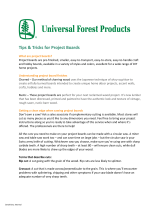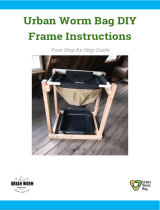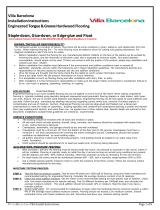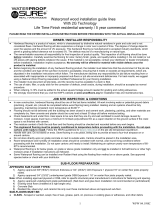table saw work too – and can save time on large jobs – but the circular saw is your Swiss army
knife of saws. Whichever saw you choose, make sure you’re using one with sharp carbide teeth.
A high number of sharp teeth will ensure clean cuts, while dull blades are more likely to chew
up the edges of your panels.
Terms that describe cuts:
Rip cut: A cut going with the grain of the wood. Rip cuts are less likely to splinter.
Crosscut: A cut that is made across/perpendicular to the grain. This is where you’ll encounter
problems with splintering, chipping and other symptoms if your saw blade doesn’t have an
adequate number of sharp teeth.
For the cleanest possible cuts every time, use masking tape or painter’s tape. After measuring
your cut line, place a piece of tape over the line. Measure and mark your line again on top of
your tape. The tape will prevent the wood from splintering and chipping.
NOTE: When using a CIRCULAR saw, remember that the blade cuts UPWARD, so you’ll want
your preferred side to face DOWN in order to minimize defects. Conversely, TABLE saws cut
DOWNWARD, so you’ll want your preferred side to face UP in order to minimize defects.
Drilling Tips
We recommend predrilling whenever it’s necessary to screw into the sides/edges of plywood.
Drilling screws directly into plywood without predrilling first may cause plies to separate.
When drilling through plywood, if you do not predrill, the backside is likely to splinter. Always
drill from the front face to make sure the visually important side of your project is as clean as
possible.
If you’re looking to achieve a splinter-free look on both sides, try applying tape to the backside.
In the same way that tape helps during sawing, it will help keep your wood from splintering
when drilling. Don’t have tape? Clamp another piece of wood to the backside and drill down
into it for the same improved results.
Sanding Tips
When sanding plywood, you’ll want the proper tools for the job on hand. These may include an
orbital sander, sanding block or sandpaper in a variety of different grits, as well as clean rags or
cloths for wiping away sawdust.
When looking for a smooth finish, start with a low-grade sandpaper (80 grit) and work up to
higher, finer grits (180-220 grit). The lower the grade, the grittier the sandpaper. Grittier
sandpaper is best for removing larger imperfections. Finer grits produce smoother and more
uniform results.







